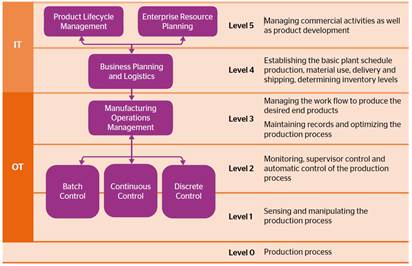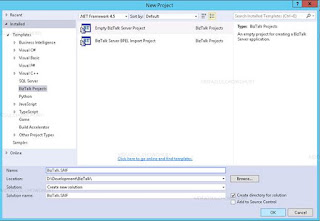Community of Practices and Software Release Planning
Introduction:
Software development arena has become more variant and competitive. People are exchanging their ideas in different kinds of internet forums and communities of practices. There is numerous open source software networks exist in this variant community and playing a vital role in the process of innovativeness and efficacy. Developers are also being helped to the greater extent by grabbing the ideas from these communities. Some industries are also paying interest to this growing community of practice. It will be effective if I could introduce a systematic process of building and managing these communities and thus helping this innovative approach to grow to a greater extent and play a vital role in the development of innovative software. Most of the planning is happening in ad hoc basis. And there is no systematic strategic release planning mechanisms to transform those ideas into product features and incorporate into releases in optimize fashion. The main idea of this research is to come up with a release planning process model through which these ideas can easily be incorporated into the planning process of releases and thus transform them into effective product features. This research will also provide us the strategic planning aspects of managing innovative developments or development of open source software systems.
The main research question for the project was to provide an effective release planning model using Release Planner for community of practices that addresses the following question:
- How can we collect the Ideas from Internet Communities and evaluate them accordingly?
- How can we perform strategic Release Planning in Community of Practices or innovative development?
- How can we optimize a Release Plan and maximize the objective function value
- How can we initiate operation planning in innovative development?
- How can we assess developer’s productivity in Community of Practices?
- What are the key aspects that play a vital role in improving a Release Plan?
Motivation:
There are many aspects of Community of Practices or simply CoPs. In the one side, the formulation of CoP and on the other hand maintaining it though some ever ending hurdles and endless effort and then taking it to the next level through some measurement and monitoring process and thus increasing the productivity, developing trust among community members and motivating people through an standard incentive model.
Mark van der Meijden and Slinger Jansen [2] has distinguished some points of advice to create effective Community of Practices (CoPs) which were basically taken from the recommendation by, Smith & McKeen [10]:
- Identify CoPs
- Activity indexes: Focuses on Knowledge transfer online and Face-to-face meetings and informal contacts are not taken care of in this regard
- Storytelling: Members tell stories about the benefits they achieved by participating in the community
- Result survey: Surveys are predefined questionnaire for which scores can be assigned by the members of COP
- Network Analysis: In Network Analysis, eliciting the structural patterns of social relationships in the network
- Facilitate and develop CoPs
- Management: Creating environments, reinforce norms, making strategic decisions and enforce employees to take part in a CoP and become an effective member and thus everyone in the company can share the knowledge effectively
- Technical Infrastructure: In CoPs a reliable technical infrastructure is required. Online Web Access, Member Collaboration, Local Support, Communication and Conversational Technology, enterprise wide library is necessary
- Culture: Building background contexts to enable members to better understand each other and the environment so that the sharing of knowledge can be effective and efficient
- Making CoPs work
- Understand the Hurdles: Members time and energy are limited while sharing the knowledge in the community, fear for know-how and losing the expert status in the community
- Make knowledge easy to use: When there is an update or a new product is released an easy online manual needs to be created for this or somehow the information needs to be passed to the members on CoP.
- Measure value: The value of CoP needs to be measured and presented to the senior management
- Develop trust: Trust is a vital part in CoPs. It involves the predictability of another person’s actions in a given situation. If two persons are working in an online environment without physical meeting, trust becomes low which needs to be developed.
- Establish coordinating roles: To ensure that CoPs work efficiently coordination roles need to be assigned like: Sponsor, Champion, Facilitator, Work Leader etc.
- Motivate people: There must be incentives for the members to participate in CoP
- Monitor Evaluation: There needs a monitoring process in place to monitor the research and practice
In Early Community Building, A Critical Success Factor for XP Projects by Gil Broza[14], the guideline of creative an effective team has been elaborated. They identified the following points as crucial for team building in communities which was focused on Agile Projects. But, it gives us some lights of creating an effective team through some effective steps:
- Ensuring adequacy of skills: It is necessary for to know the skill profile of team members and boost the required skill set among the members through some trainings or mentoring
- Building Team Spirit: To build team spirit the visibility of benefits is effective
- Allay Fears: In another term building the teams confidence level and incase of any inefficiency or knowledge deficiency
- Align individual interests with the organization: Start looking at the organizational interest rather than the interest of individual member of CoP
- Provide opportunities for feedback and learning: Feedback is an efficient process to make CoPs work seamlessly and more effectively. The more collaboration and more feedback I can get the more effective the CoPs will be. Early feedback is the key to the success of CoPs
- Encourage ‘responsible’ creativity: Identify the champion of skills or innovativeness and rewarding them accordingly is an efficient way of encouraging creativity
- Practice humility: As it is a collective effort, there is a room for collaboration and humility at the same time. The success relies on whole team rather than a particular developer
INNOMODEL:
“INNOMODEL” is my proposed Release Planning process model through which the innovative ideas can be incorporated into product releases and providing the light to an strategic release planning process model utilizing the power of Release Planner tool. “INNOMODEL” is prescribed release planning process model for Community of Practices or CoPs. It consists of following processes:
ž Step 1: Define Strategic Plan and Scope of Development
ž Step 2: Collect Ideas from Members of Community of Practice
ž Step 3: Rank Ideas by Members of Community of Practice or Get Effective Feedback on Ideas
ž Step 4: Analyze the Ideas from different angle of Release Planning
ž Step 5: Estimate ROI of Collected Ideas
ž Step 6: Build Risk Profile of Collected Ideas
ž Step 7: Selection of Ideas after Elaborative Analysis
ž Step 8: Convert Collected Ideas into Product Features and perform the Resource Estimation
ž Step 9: Perform Strategic Release Planning
ž Step 10: Perform Re-Planning (if necessary to maximize the value)
ž Step 11: Build the Team and Perform Operational Planning
ž Step 12: Ship the Product to the Market Place
References:
1. Release Planner, Dr. Ruhe, https://www.releaseplanner.com/
2. A Stigmergy Approach for Open Source Software Developer Community Simulation, Xiaohui Cui, Justin Beaver, Jim Treadwell and Thomas Potok Oak Ridge National Laboratory Oak Ridge, TN 37831, Laura Pullum Lockheed Martin Corporation St. Paul, MN 55164-0525
3. Mechanism Design to Promote Free Market and Open Source Software Innovation, Geoffrey Parker Tulane University New Orleans, LA 70118 Email: gparker@tulane.edu, Marshall Van Alstyne MIT Center for eBusiness Cambridge, MA 02139 Email: marshall@mit.edu
4. The Importance of Social Network Structure in the Open Source Software Developer Community, Matthew Van Antwerp Department of Computer Science and Engineering University of Notre Dame Notre Dame, IN 46556 mvanantw@cse.nd.edu, Greg Madey Department of Computer Science and Engineering University of Notre Dame Notre Dame, IN 46556 gmadey@cse.nd.edu
5. Dynamic Community: A New Conceptual Framework for Supporting Knowledge Collaboration in Software Development, Yunwen Ye 1,3 Yasuhiro Yamamoto 2 Kouichi Kishida 3 1 Department of Computer Science University of Colorado Boulder, CO80309-0430, USA 2 Knowledge Interaction Design Laboratory RCAST, University of Tokyo Tokyo, 153-8904, Japan 3 SRA Key Technology Laboratory, Inc. 3-12 Yotsuya, Shinjuku Tokyo 160-004, Japan yunwen@cs.colorado.edu yxy@computer.org k2@sra.co.jp
6. The Organization of Open Source Communities: Towards a Framework to Analyze the Relationship between Openness and Reliability, Ruben van Wendel de Joode & Mark de Bruijne Delft, University of Technology rubenw@tbm.tudelft.nl & markbr@tbm.tudelft.nl
7. Strong threads of learning-knowledge transfer within communities of practice, Rouser, K. ; Dorsey, A. ;
8. Scoring Mechanisms to Encourage Participation in Communities of Practice, Gouvea, M.T.A. ; Motta, C.L.R. ; Santoro, F.M. ;
Nucleo de Computafao Eletronica, UFRJ
9. Performance Measuring in Communities of Practice: A Method and Case Study, Mark van der Meijden and Slinger Jansen Utrecht University Utrecht, the Netherlands {hmmeijde, s.jansen}@cs.uu.nl
10. ClimbIT , Products and Services
11. Smith, H. A. & McKeen, 1. D. (2003). Creating and Facilitating Communities of Practice. In C.W. Holsapple, Handbook on knowledge management Knowledge matters. (pp. 393 -407) . Basel : Birkhl1user.
12. Grootveld, A. (2007). Communities of practice: Extending the SES model with a measurement and context check and applying it to a global CoP. Master Thesis Business Informatics. Institute of Information and Computing Sciences, Utrecht University, Netherlands.
13. Hendriks, P. (1999). Why Share Knowledge? The Influence of iCT on the Motivation for Knowledge sharing. Knowledge and Process Management, 6 (2), 91-100
- Early Community Building: A Critical Success Factor for XP Projects Gil Broza Industrial Logic (Canada) Toronto, ON, Canada gil@industriallogic.com



Comments
Post a Comment